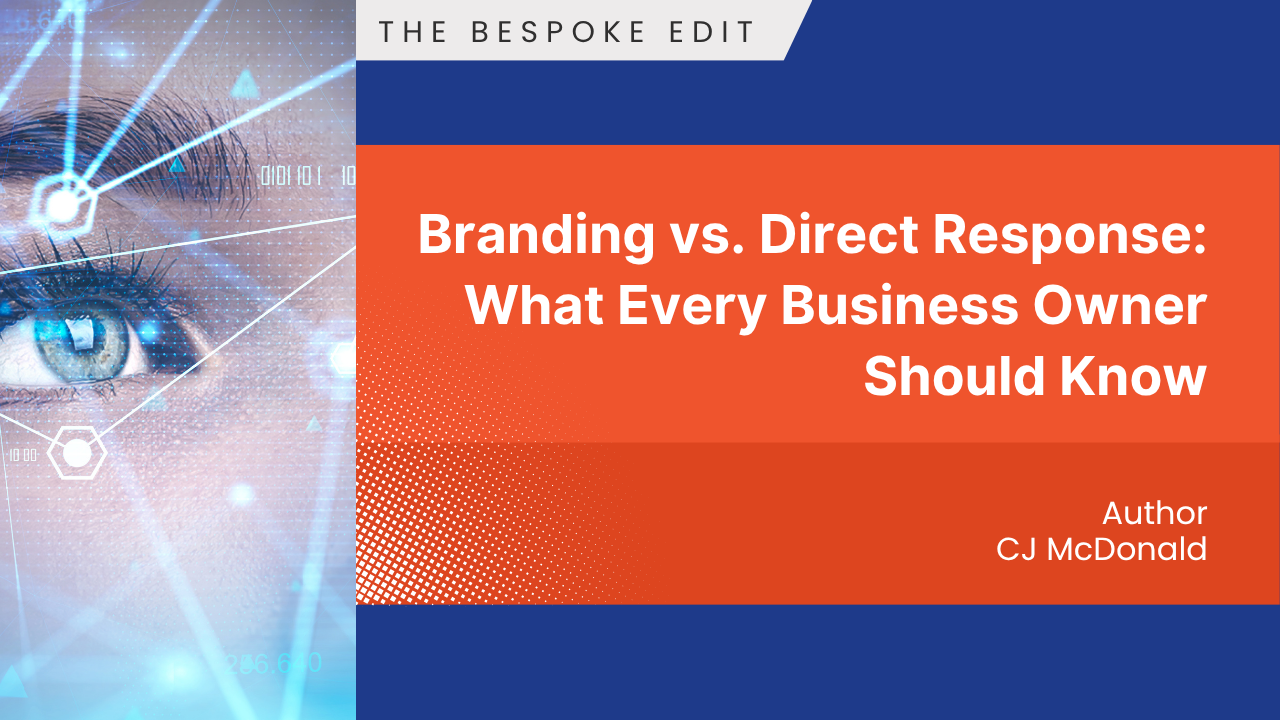Branding vs. Direct Response: What Every Owner Should Know

In today's fast-paced, results-driven business landscape, many entrepreneurs and business owners find themselves hyper-focused on immediate returns. They invest in advertising campaigns expecting instant leads, sales, and measurable conversions. However, this short-term mindset often leads to a fundamental misunderstanding of branding and its long-term value.
What is Branding?
Branding is more than just a logo or a catchy tagline—it is the essence of how a business is perceived by its audience. It includes the company’s mission, values, voice, visual identity, and the emotional connection it creates with consumers. A strong brand fosters customer loyalty, builds trust, and differentiates a business from its competitors.
Direct Response Advertising vs. Branding
Many business owners mistakenly equate branding with direct response advertising. Direct response marketing aims to elicit an immediate reaction from consumers—whether a sale, sign-up, or phone call. It is transactional in nature and typically relies on tactics such as pay-per-click (PPC) ads, email marketing, or limited-time offers.
Branding, on the other hand, is a long-term strategy focused on shaping consumer perception and establishing a strong presence in the market. While direct response campaigns may generate quick wins, branding ensures that customers remember and return to a business over time. Think of branding as planting a tree—it requires patience, nurturing, and consistency, but ultimately, it yields long-lasting benefits.
The Consequences of Prioritizing Immediate ROI Over Branding
When businesses focus solely on direct response advertising and neglect branding, they risk becoming overly dependent on short-term tactics. Here are some common pitfalls:
1. Lack of Brand Recognition: Without a strong brand identity, businesses struggle to stand out in a crowded market.
2. Customer Distrust: Constantly pushing sales without brand-building can make a company feel transactional rather than relationship-driven.
3. Inconsistent Messaging: Without a cohesive brand strategy, marketing efforts can feel disjointed and fail to create a lasting impact.
4. Higher Customer Acquisition Costs: Branding creates familiarity and trust, making customer acquisition easier and more cost-effective over time.
Top 5 Ways Business Owners Can Ensure Effective Branding
In today's competitive marketplace, branding is the key to long-term success. While many business owners focus on short-term marketing tactics, true branding requires a strategic and consistent approach. Here are the top five things a business owner can do to ensure their brand stands out and remains memorable.
1.
Define Your Brand Identity
A strong brand starts with a clear identity. Business owners must define their mission, values, and unique selling proposition (USP). Ask yourself: What makes my business different? What emotions do I want my audience to associate with my brand? Establishing a clear brand identity sets the foundation for all future marketing efforts.
2.
Maintain Consistent Messaging and Visuals
Consistency is key when it comes to branding. Your messaging, tone, colors, and visual elements should remain uniform across all platforms—whether it’s your website, social media, or print materials. A cohesive brand presence helps build recognition and trust among consumers.
3.
Focus on Relationship Building Over Transactions
Branding is about creating meaningful connections with your audience. Instead of only pushing sales, focus on engaging with customers through storytelling, social media interaction, and exceptional customer service. A strong brand prioritizes relationships, fostering loyalty and word-of-mouth referrals.
4.
Implement a Strategic Marketing Plan
A well-rounded marketing strategy—including digital presence, content marketing, and community involvement—is essential for brand growth. Rather than chasing quick returns, invest in long-term efforts such as local networking, social media engagement, and valuable content creation that aligns with your brand identity.
5.
Play the Long Game
Branding is a marathon, not a sprint. While short-term advertising can drive immediate results, long-term branding efforts create a lasting impact. Stay patient, remain consistent, and continue reinforcing your brand values. Over time, this strategy will establish your business as a trusted and recognizable name in your industry.
A strong brand is more than a logo or a tagline—it’s the heart of a business. While direct response advertising can drive short-term revenue, a well-defined brand fosters customer loyalty, trust, and sustainable growth.
Business owners who recognize the difference between branding and immediate ROI will be better positioned for long-term success. By defining your identity, maintaining consistency, focusing on relationships, implementing a strategic plan, and thinking long-term, you can build a brand that not only attracts customers but also keeps them coming back for years to come.
⏱️ 3 Things You Can Do in 15 Minutes
Ready to strengthen your brand without the overwhelm? Here are 3 simple actions you can take in just 15 minutes today:
1.
Audit Your Visual Brand
Take a quick look at your website and social media. Are your colors, fonts, and tone consistent? Jot down any mismatches you notice and update one today.
2.
Rewrite Your Bio or “About” Section
Make sure it clearly communicates your mission, values, and what sets you apart. Aim for clarity, personality, and alignment with your brand voice.
3.
Engage With One Customer on Social Media
Comment, message, or thank a recent customer. A small, authentic interaction builds brand loyalty and shows you care about relationships—not just sales.

